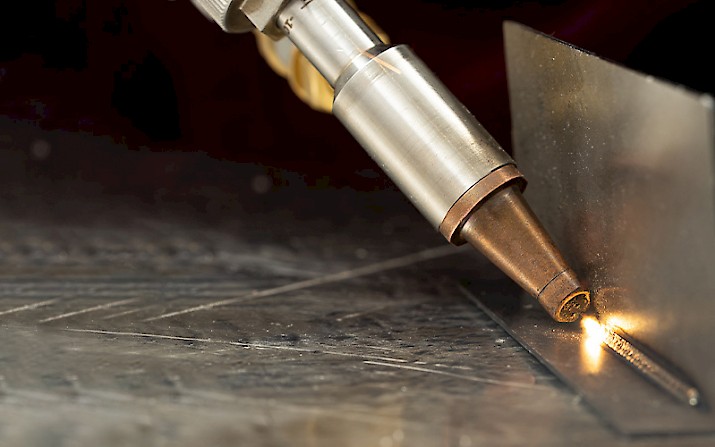Developing a Welding WPS: Step-by-Step Instructions for Professionals
Developing a Welding WPS: Step-by-Step Instructions for Professionals
Blog Article
The Ultimate Guide to Welding WPS Procedures: A Thorough Review for Welders
In the intricate globe of welding, Welding Treatment Specifications (WPS) serve as the foundation of guaranteeing high quality, uniformity, and safety and security in welding procedures (welding WPS). As we delve into the various components of a WPS and explore the details of credentials and certification, we will certainly reveal the vital function these procedures play in the world of welding.
Value of WPS Procedures
Understanding the importance of Welding Treatment Requirements (WPS) treatments is crucial for guaranteeing the top quality and honesty of welded structures. WPS procedures offer as a roadmap for welders, detailing the needed actions, specifications, and materials called for to accomplish an audio weld. By sticking to WPS guidelines, welders can ensure consistency in their job, leading to dependable and structurally sound welds.
Among the main reasons that WPS procedures are important is their role in keeping weld quality and stability. Complying with the defined welding parameters and techniques detailed in the WPS aids stop problems such as porosity, breaking, or incomplete combination, which can compromise the strength and toughness of the weld. Furthermore, WPS treatments are important for ensuring compliance with market requirements and codes. By complying with well established WPS guidelines, welders can show that their job meets the necessary needs for security and top quality, offering assurance to clients, inspectors, and regulative bodies. In significance, the value of WPS treatments can not be overemphasized, as they are essential to achieving consistent, high-quality welds that satisfy industry requirements and specifications.

Parts of a WPS
A Welding Treatment Requirements (WPS) generally comprises crucial components that detail the details demands for performing a weld, ensuring uniformity and high quality in the welding process. The key parts of a WPS consist of important variables such as base steels, filler metals, interpass and preheat temperatures, welding processes, securing gases, welding placements, and post-weld heat therapy requirements.
Base steels refer to the products being joined, while filler steels are utilized to fill up the void between the base steels throughout welding. Preheat and interpass temperatures are crucial for regulating the warmth input and stopping problems like cracking or distortion. The welding procedure describes the details technique to be used, whether it's gas steel arc welding (GMAW), shielded metal arc welding (SMAW), or one more method. Shielding gases safeguard the weld swimming pool from atmospheric contamination. Welding positions specify the positionings in which welding can be carried out. Post-weld heat treatment may be needed to ease stresses and enhance the weld's homes. A comprehensive understanding of these components is vital for creating a reliable and thorough WPS.

Certification and Qualification
Having actually established the vital elements of a Welding Treatment Spec (WPS), the focus now shifts in the direction of the essential elements of certification and qualification in welding practices.

Certification, on the other hand, is the official acknowledgment of a welder's credentials by a relevant certification body or company. Welding accreditations are commonly based on the details welding procedures, products, and placements a welder is qualified to collaborate with. Holding a legitimate welding qualification shows that a welder satisfies sector standards and view it is qualified to execute welding jobs to the required specs.
Developing a WPS
To establish a Welding Treatment Spec (WPS) that meets industry standards, cautious consideration of welding processes, products, and functional parameters is essential. The first step in producing a WPS is to determine the welding process to be used, such as gas metal arc welding (GMAW) or secured steel arc welding (SMAW)

Executing and Checking WPS
Upon finalizing the extensive Welding Procedure Spec (WPS) that thoroughly details welding processes, products, operational parameters, and high quality guarantee actions, the focus shifts to efficiently executing and monitoring the well established treatments. Application includes making certain that all welders associated with the task recognize with the WPS and follow it thoroughly during the welding procedure. This needs supplying appropriate training and supervision to assure adherence to the specified treatments. Keeping an eye on the WPS includes continual oversight to confirm that welding activities align with the documented requirements. Evaluations, testing, and quality control measures are important components of the tracking process to identify any kind look at more info of problems or variances quickly. Routine audits and reviews of the welding treatments assist in preserving consistency and high quality throughout the task. Efficient application and monitoring of the WPS are important for making certain the honesty, toughness, and security of the welded joints, ultimately adding to the total success of the welding project.
Conclusion
In conclusion, understanding and adhering to Welding Procedure Specifications (WPS) is essential for welders to guarantee high quality, consistency, and safety and security in their job. By recognizing the components of a WPS, getting proper certifications and certifications, producing thorough treatments, and implementing and checking them effectively, welders can enhance their skills and effectiveness in welding techniques. Sticking to WPS procedures is vital for generating premium welds and meeting market standards.
In the elaborate world of welding, Welding Treatment Requirements (WPS) offer as the foundation of ensuring quality, uniformity, and safety and security in welding procedures. The welding process details the certain strategy to be made use of, whether it's gas steel arc welding (GMAW), secured steel arc welding (SMAW), or another method.To develop a Welding Procedure Specification (WPS) that meets industry standards, cautious factor to consider of welding processes, materials, and operational parameters is important. The very first action in developing a WPS is to identify the welding process to be made use of, such as gas metal arc welding (GMAW) or shielded metal arc welding (SMAW)Upon settling the thorough Welding Procedure Specification (WPS) that meticulously information welding procedures, materials, functional criteria, and quality assurance actions, the emphasis moves to successfully executing and keeping track of the well-known treatments.
Report this page